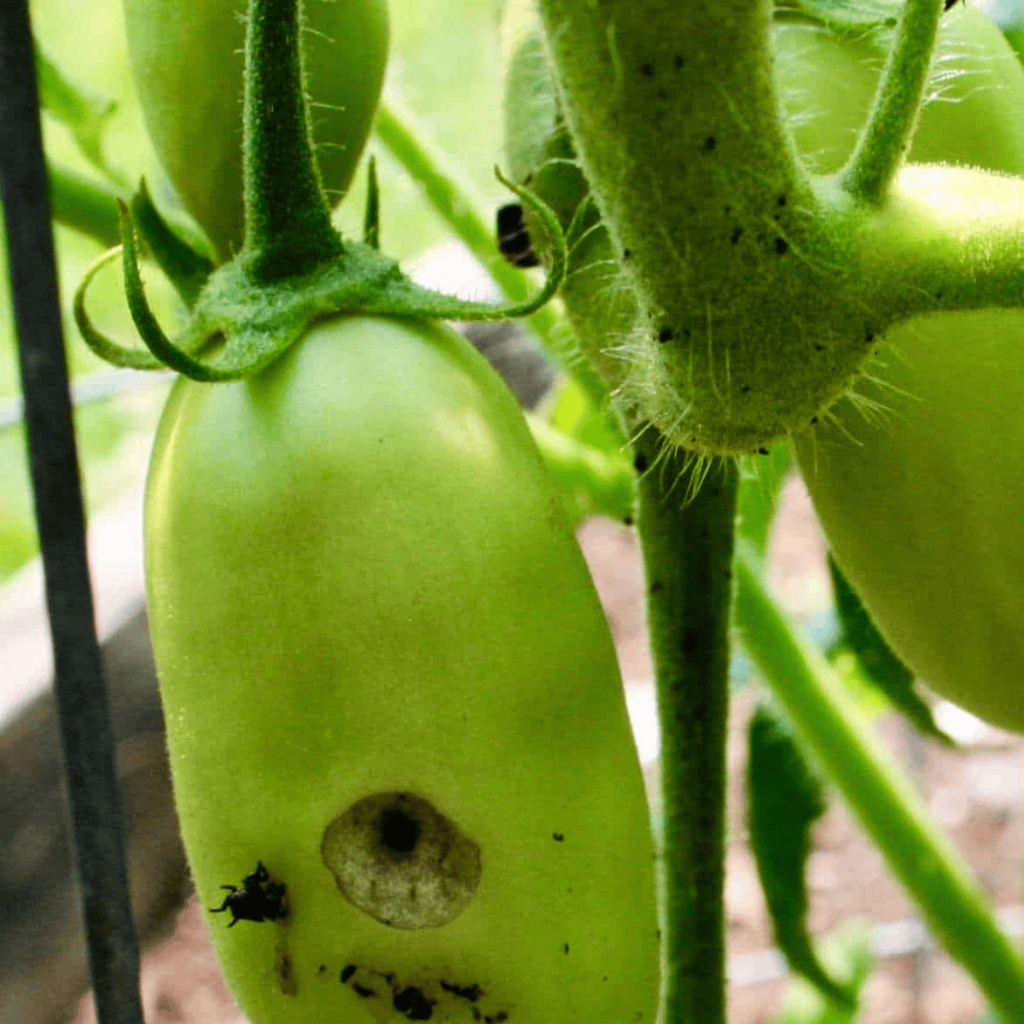The tomato fruitworm usually affects unripe tomatoes and causes considerable damage. Here’s how to spot these pests, what they are, and organic methods to control them.

What Is the Tomato Fruitworm?
You’re watering the garden, admiring your lovely tomatoes, when suddenly you notice a hole. It looks like a woodpecker started pecking a green tomato, or some crazed gardener took a drill to the tomato. Sometimes the hole has a depression in the middle of it or just looks bruised. Others, like the hole in my Roma tomato in this picture, show that something made its way into the tomato. But what?
Welcome to the world of the tomato fruitworm. It’s also called the corn earworm, Helicoverpa zea. It’s typically a late-summer pest of corn, which is why I was surprised to find it in my garden now, at the start of June. However, we’ve had crazy weather for late spring. Very hot temperatures soaring into the mid-90s and a dry spell probably gave the pest an early start.
The tomato fruitworm isn’t fussy about its host plants, although it does love corn. I stopped growing corn because I had trouble growing sweet corn, and also due to the corn earworm, although I didn’t know it was the same bug at the time. I just knew that every time I pulled back the leaves from a ripe ear of corn, one or two worms fell out.
The larvae are the young of a nondescript brown moth. They take several weeks to mature inside the fruit, then drop back to the ground where they burrow several inches into the soil and overwinter. Next year, they hatch into the mature moth, which then looks for other crops to infect.
What Do Tomato Fruitworms Eat?
Obviously, tomatoes, but they’ll also eat corn, green beans, lettuce, and, according to the Virginia Cooperative Extension, over 300 host plants. Luckily for me, however, the worms are loners; the parents lay one egg, not a clutch of eggs like the potato beetle, which is also attacking my tomato plants this year.
How Do You Get Rid of The Tomato Fruitworm?
You can pick the unripe tomato and discard it in the trash. Unfortunately, you can’t get the worm out and salvage your tomato.
Many beneficial insects, such as parasitic wasps, eat the eggs and larvae, and my garden tends to attract parasitic wasps, so I’m holding out hope that the wasp air force will arrive and come to my rescue, and nature will restore the balance in my garden.
If that fails, Bacillus thuringiensis (Bt), an organic spray made from a natural bacterial predator, can be used. However, for just a few tomatoes and a small garden, no treatment is really necessary.




